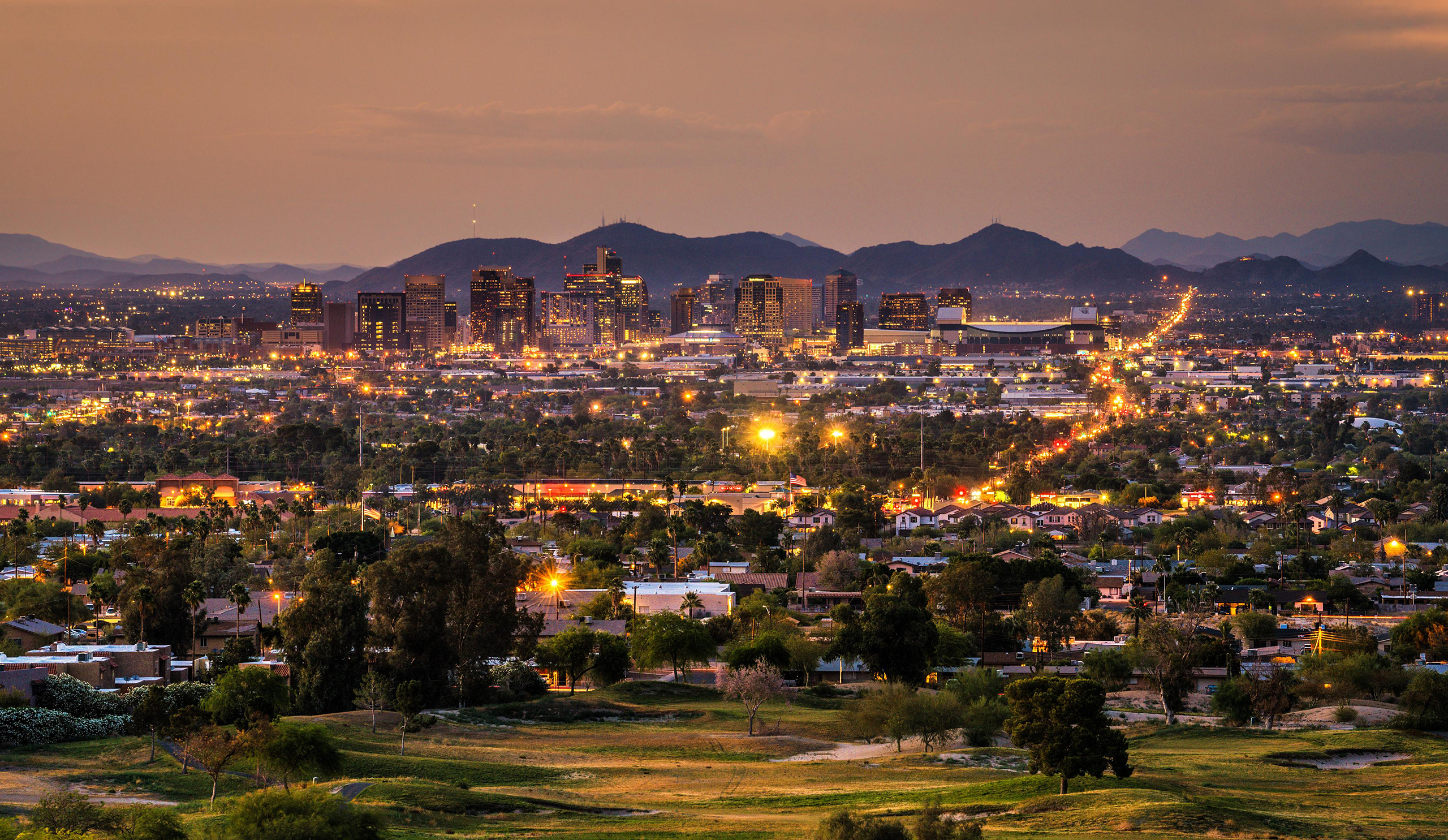
Phoenix-Mesa-Scottsdale area is poised for change
Authentic. Unique. Experiential. Community. These buzz words are landing in cities across the country as more and more mixed-use projects aim to meet the market’s desire for something different. Not surprisingly, Phoenix, Mesa, and Scottsdale are following suit. New residential, retail, and commercial projects starting to fill the real estate landscape are bringing entirely new experiences to the Valley.
An urban condo project paired with an art-themed boutique hotel rises up near light rail and a sprawling downtown park. A repurposed barn welcomes craftsmen and makers who offer everything from Arizona wines to handmade paper goods and locally-sourced meals. A longtime citrus nursery takes root as a new dining hub and hangout spot dotted with the fruit trees.
Humming with a live-work-gather vibe, projects like these are helping build community, boost the economy, and bolster cities. And with a focus on urban infill, adaptive reuse, and redevelopment, the projects are collectively changing the face of the Valley.
“Small projects may seem insignificant, but they can be the catalyst for large city-wide change,” says Christian Hulme (MRED ’15), development coordinator with Venue Projects, which has led a handful of successful mixed-use projects in the Phoenix area.
There’s no question that the Valley is poised for even more change.
Trending — While cities throughout the country are seeing this trend toward building community and fostering live, work, and play, the secondary and tertiary markets in particular are taking off. Cities like Austin, Portland, San Diego, and Phoenix have millennials and baby boomers to thank for relocating to those areas and driving change, says Randy Levin, chief executive officer and managing director of ASU Enterprise Partners’ University Realty. Those two demographics are drawn to urban areas that put them in the middle of it all, transit-friendly and walkable developments, sustainable and green spaces, and places that can tell a story.
Next gen — Public and private leaders in the Phoenix metro area are pushing to grow advanced industries such as technology, bio-tech, and advanced manufacturing. Cities hoping to attract innovators like Google or Tesla need equally innovative development. What’s more, if cities want to stop “brain drain,” they need to answer the call of the next generation — 24/7 entertainment, unique experiences, international cuisine, localism, and more, says Kimber Lanning, founder and executive director of the advocacy organization Local First Arizona.
Culture — Cities are seeing the value of efforts like adaptive reuse. From the local retailer setting up shop in a 50s-era office building to the indie bookstore holding signings in a former restaurant, these projects are helping create a unique and authentic culture in Valley communities. “We owe it to ourselves to preserve our older building stock,” Lanning says. “We need old and new alike.”
Increasingly, projects around the Valley are focused on giving new life to old spaces and places, whether a small strip center or neighborhood. Flashback a few years ago to a mid-century modern center, home to the popular Crown Imports, in central Phoenix. With time taking its toll and the beloved retailer winding down, the center faced an uncertain future. The spot could have been written off like so many others, as “areas that time passed by and (were) ready for demolition,” Levin says.
Instead, the reimagined Crown on 7th now buzzes with local restaurants, retail, and a welcoming courtyard.
Often, these developments are breathing new life into areas that have been diminished, says Mollie Jackson (MRED ’15), development coordinator with Jackson Commercial Real Estate. “These projects are good for the community,” she says.
In the same way that the small shopping center was revived, South Scottsdale has seen a resurgence with SkySong, a center for innovation led by ASU and other partners that opened its first phase in 2008. Despite a slowdown due to the recession, additional office space and apartments have followed. The center recently added a hip co-working space and is planning for several farm-to-table restaurants. The development’s mix of uses, walkability, and open spaces have remade the area into an urban hub.
Another innovative project will give Mesa’s historic Alhambra Hotel — and the downtown area — a boost. Led by Venue Projects, the hotel is being rehabbed for student housing for Benedictine University. It will also include a student lounge, café, and outdoor courtyard. The Alhambra could draw as many as 60 students downtown, helping turn a largely eight-hour area into an 18-hour place swirling with student activity, Hulme says.
“No project is like another,” he explains. “If the building and the location are right, you can make these little gems into something that the community really wants.”
The spring 2017 issue of W. P. Carey magazine covers more of this scene playing out across the country. Also, learn about sustainable living and three alums with deep roots in real estate.
Latest news
- After NHL exit, W. P. Carey alums advocate for the future of Arizona hockey
Olympian Lyndsey Fry (MBA '18) and Garrett Niederkorn (BS Management Entrepreneurship '15, MBA '…
- Gensler expert shares trends redefining Arizona real estate
Guest lecturer Oscar De las salas partners with W. P.
- Will travel disruptions threaten holiday package delivery?
As the holiday rush begins, travel disruptions from the government shutdown threaten to delay…